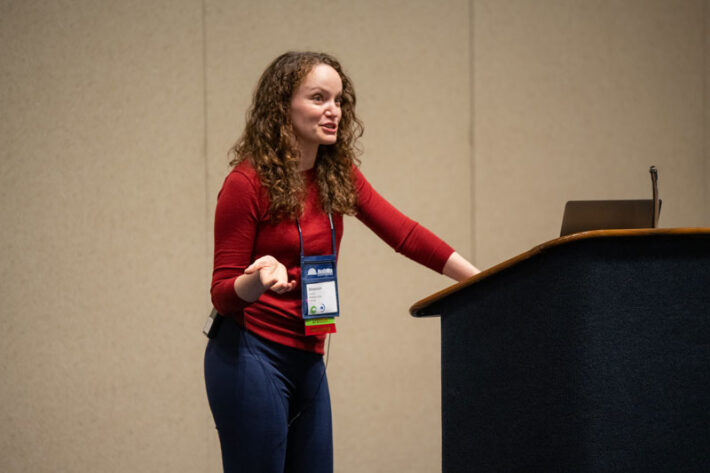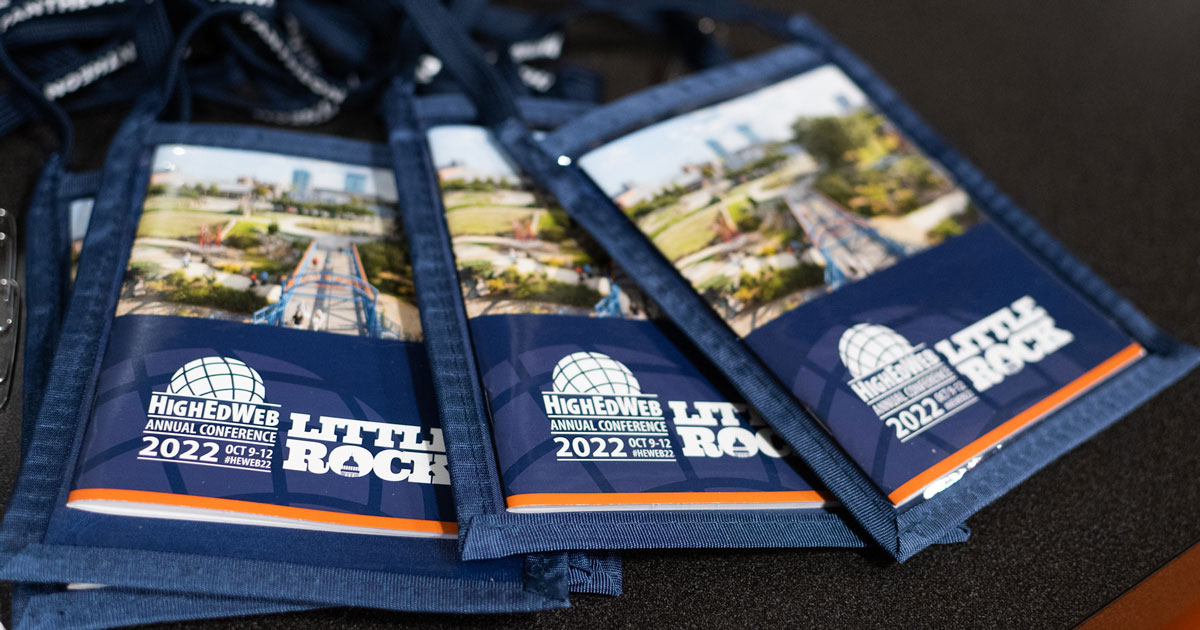By artfully and strategically pairing words and images, colleges and universities can tell meaningful stories, said Shannon Lanus, senior director of content at Carnegie. Drawing from her content designer expertise and background in film/TV development, she shared actionable information and ideas for great digital storytelling during her session at the HighEdWeb 2022 Annual Conference.
Digital stories can have more than one life. You can extend the reach and impact of communications that you already produce. Lanus detailed how to design and restructure digital content to tell better stories on websites, on social media, in videos, and more.

The power of story
Storytelling is one of the oldest forms of communication in the world. Stories help humans solve problems, experience pleasure, provide pattern, provide order and assimilate into society.
“It’s through story that we understand how the world works,” Lanus said, explaining that storytelling also helps institutions of higher education reveal and build their brand.
“Stories help us define ourselves to ourselves and to others,” because they can educate, inspire, engage and move people to action, she said.
As a storytelling resource, Lanus suggests “The Storytelling Animal: How Stories Make Us Human,” by Jonathan Gottschall.
The elements of a digital story
Using examples drawn from news media, colleges and more, Lanus illustrated how best to tell stories digitally with five elements.
Intentional design – Think about interfaces that encourage reading. Provide sufficient white space that allows viewers to focus on the text and consider layout flexibility for desktop and phones. Lanus shared this work example: Leaders in Action on the University of North Dakota homepage. When you select the image, text appears on the bottom. Select “Meet ‘student’s first name,’” to reveal a page with plenty of white space, text that reduces eyestrain, large photos and pull quotes.
Structured content – Establish a metadata and keyword plan that will help with searches and help people access your content through proper tagging structure.
Integrated multimedia – Include photography, video, audio, illustrations, infographics and data visualization. Lanus shared a piece on Black NFL coaches from the Washington Post.
Engagement opportunities – Determine what people can go on to do after they experience your story. Lanus shared a call to action from Patagonia Films. A good digital story might encourage reader contributions. It can inspire you to explore related stories or deep-dive opportunities such as podcasts and playlists.
Technology – Employ technology that allows your college or university to best tell stories.
Story strategy and storytelling governance
What’s going on that can either support storytelling or get in the way? Be mindful of where story creation can go off the rails:
- Production is overbudget
- Production is behind schedule
- Content looks lackluster
- The production team lacks the proper skill sets
- Assets are scattered across email, shared drives, and project management systems
- Different areas are producing different versions of the same
- Stories are launched and forgotten
- The story doesn’t appeal to the audiences that you’re trying to reach
Lessons learned
Lesson 1: Your institution is not the hero of the story. A primary part of digital storytelling is the sharing of personal stories. “The heroes are always the people,” Lanus said. “People connect to stories about people.”
Lesson 2: Fewer stories, better told.
Lesson 3: Story first, department second. The idea here is that various departments may be using different language but “we are all working for the same goal,” Lanus said.
All session recordings from the HighEdWeb 2022 Annual Conference will be available to event attendees until Nov. 9. Conference attendees can log in to the Event Hub, go to the session page and select “join the session” to find the recording.
Recordings will be available in the HighEdWeb Professional Development Library after Nov. 9 for Premium Professional Members.
Bobbie Handcock is a web content specialist at the University of Arkansas at Little Rock. Before joining the university’s communications and marketing team, she spent the first part of her career telling stories as a print journalist and as a communications specialist for state agencies. She loves reading, spending time with family, traveling, and learning – whether it’s another language or technical writing skills.

